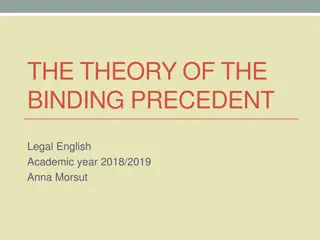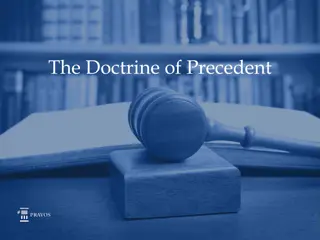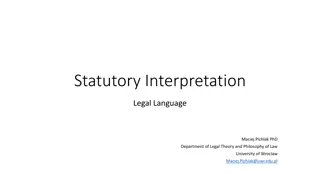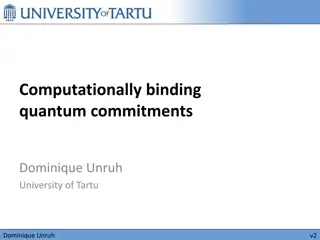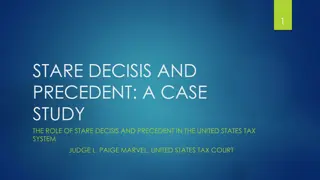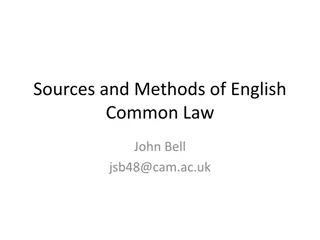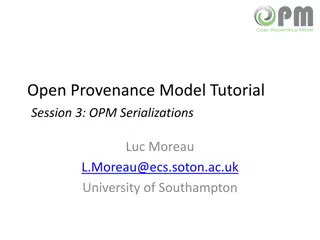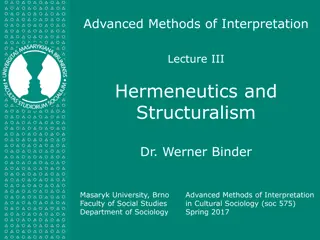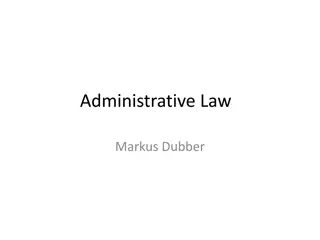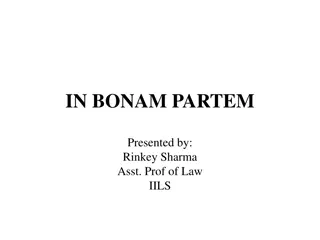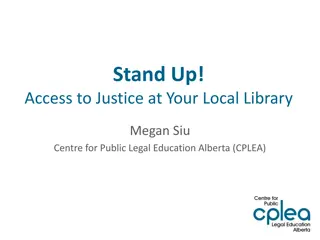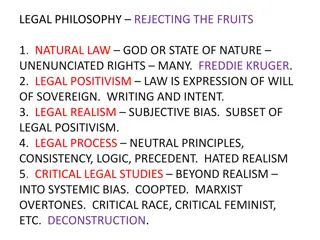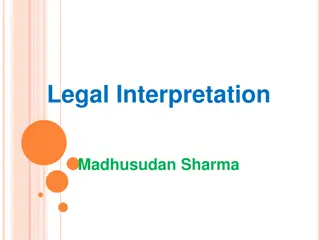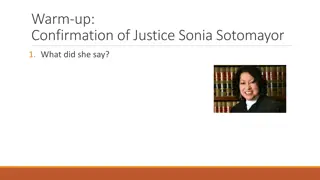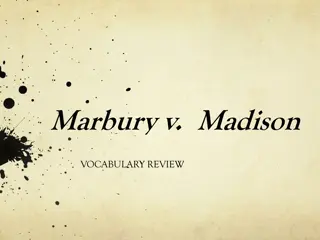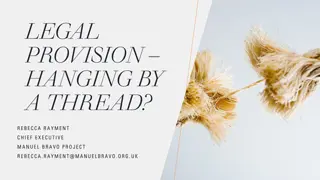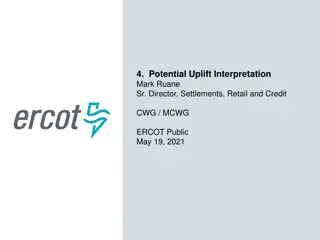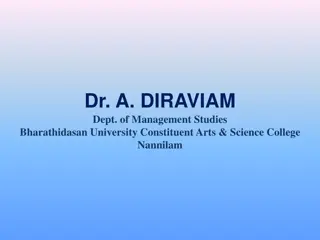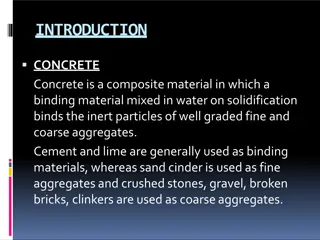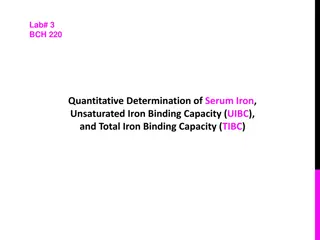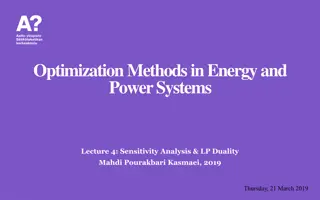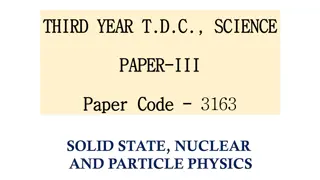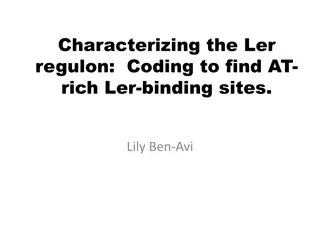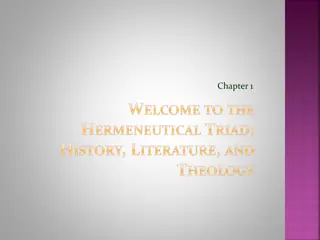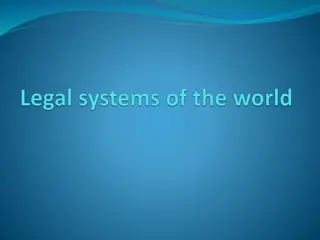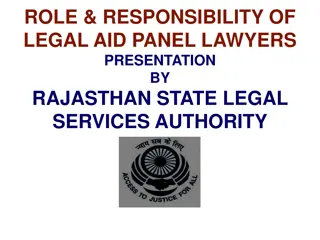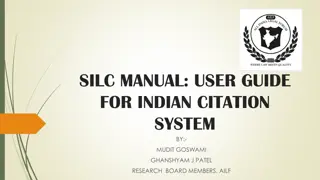Understanding Binding Precedent in Legal Interpretation
The concept of binding precedent, also known as stare decisis, plays a crucial role in legal decision-making across different legal systems. This principle ensures that lower courts are bound by the decisions of higher courts, while also allowing for exceptions under specific circumstances. Key cases, such as Donoghue v. Stevenson and Grant v. The Australian Knitting Mills Ltd., exemplify how precedent and the ratio decidendi impact legal interpretation and subsequent judgments.
Download Presentation

Please find below an Image/Link to download the presentation.
The content on the website is provided AS IS for your information and personal use only. It may not be sold, licensed, or shared on other websites without obtaining consent from the author. Download presentation by click this link. If you encounter any issues during the download, it is possible that the publisher has removed the file from their server.
E N D
Presentation Transcript
Legal Language Interpretation of case law Maciej Pichlak Department of Legal Theory and Philosophy of Law University of Wroclaw Room 302A | maciej.pichlak@uwr.edu.pl https://prawo.uni.wroc.pl/user/12147
The concept of binding precedent A sufficient ground for decision Stare decisis principle (doctrine of precedent) The precise operation of stare decisis varies from one legal system to another. It is common for courts lower in a judicial hierarchy to be strictly bound by the decisions of higher courts, so that Federal Court judges in the United States are bound by decisions of the Federal Court of Appeals for their circuit, and the English Court of Appeal is bound by decisions of the House of Lords. The lower court is strictly bound because it has no power to overrule the higher court's decision. Equally, most appeal courts are bound by their own earlier decisions, though they are generally entitled in certain circumstances to overrule those decisions. There is enormous variation in the circumstances that are necessary for a court to overrule one of its own decisions: at a minimum it must regard the earlier decision as wrongly decided, but generally more is required than this, e.g. that the decision is clearly or plainly wrong.[3]. Finally, courts are generally not bound by the decisions of lower courts: the House of Lords for example is not bound to follow decisions of the Court of Appeal and is free to overrule such decisions if it takes a different view of how the case should have been decided.
Three basic situations APPLYING DISTINGUISHING OVERRULING
Donoghue v Stevenson (1932) On August 26 1928, Mrs Donoghue s friend bought her a ginger-beer from Wellmeadow Caf 1 in Paisley. She consumed about half of the bottle, which was made of dark opaque glass, when the remainder of the contents was poured into a tumbler. At this point, the decomposed remains of a snail floated out causing her alleged shock and severe gastro-enteritis. Mrs Donoghue was not able to claim through breach of warranty of a contract: she was not party to any contract. Therefore, she issued proceedings against Stevenson, the manufacture, which snaked its way up to the House of Lords. Duty of care and negligence
Grant v The Australian Knitting Mills Ltd. (1935) Dr Grant, the plaintiff had bought an undergarment from a retailer. The undergarment is manufactured by the defendant, Australian Knitting Mills Ltd. Dr Grant was contracted dermatitis. The undergarment was in a defective condition owing to the presence of excess of sulphite. It was found that the manufacturer had been negligently left in it in the process of manufacture. In this case, the buyer sued the retailer in contract and the manufacturer in tort. What are the material facts of the case? Are they similar to material facts in Donoghue? Is the case covered by the ratio decidendi for Donoghue?
Donoghue: ratio decidendi Version A: it could be interpreted as narrow as to establish a duty not to sell opaque bottles of ginger-beer, containing the decomposed remains of a dead snail, to Scottish widows . Version B: first, negligence is distinct and separate in tort; second, there does not need to be a contractual relationship for a duty to be established; third, manufacturers owe a duty to the consumers who they intend to use their product. Lord Atkin and the neighbour principle: The rule that you are to love your neighbour becomes in law, you must not injure your neighbour; and the lawyer s question, Who is my neighbour? receives a restricted reply. You must take reasonable care to avoid acts or omissions which you can reasonably foresee would be likely to injure your neighbour. Who, then, in law is my neighbour? The answer seems to be persons who are so closely and directly affected by my act that I ought reasonably to have them in contemplation as being so affected when I am directing my mind to the acts or omissions which are called in question.
Balfour v Balfour (1919) Merrit v Merrit (1971) In Government in Ceylon (now Sri Lanka). Mrs Balfour was living with him. In 1915, they both came back to England during Mr Balfour's leave. But Mrs Balfour had developed rheumatic arthritis. Her doctor advised her to stay in England, because Ceylon climate would be detrimental to her health. As Mr Balfour's boat was about to set sail, he promised her 30 a month until she came back to Ceylon. They drifted apart, and Mr Balfour wrote saying it was better that they remain apart. In March 1918, Mrs Balfour sued him to keep up with the monthly 30 payments. Balfour, Mr Balfour was a civil engineer, and worked for the In Merrit, Mr. Merritt and his wife jointly owned a house. Mr. Merritt left to live with another woman. They made a signed agreement that Mr. Merritt would pay Mrs. Merritt a 40 monthly sum, and eventually transfer the house to her, if Mrs. Merritt kept up the monthly mortgage payments. When the mortgage was paid Mr. Merritt refused to transfer the house.
Further reading https://www.lawteacher.net/cases/donoghue-v-stevenson.php https://www.lawteacher.net/free-law-essays/judicial-law/previous- decisions-made-by-judges-in-similar-cases-judicial-law-essay.php


